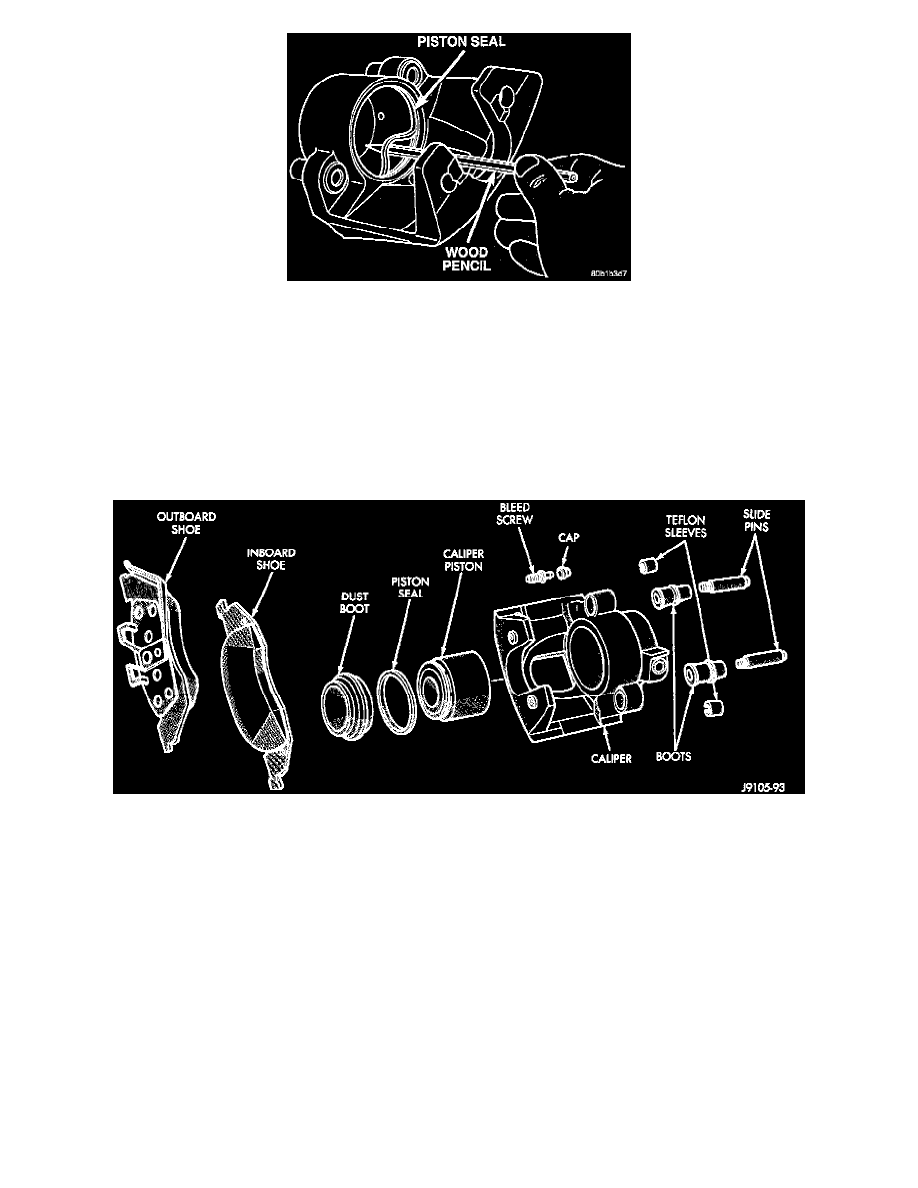Dakota 4WD V8-318 5.2L (1991)

Caliper Piston Seal
6. Remove caliper piston seal with wood pencil or plastic tool. Do not use metal tools as they will scratch piston bore.
7. Remove caliper slide pin bushings and boots.
8. Remove caliper bleed screw and cap.
CALIPER CLEANING AND INSPECTION
Clean the caliper and piston with clean brake fluid or Mopar brake cleaning solvent only. Do not use gasoline, kerosene, thinner, or any similar
type of solvent. These products will leave a residue that could damage the piston, seal, or piston bore.
Wipe the caliper and piston dry with lint free towels or use low pressure compressed air.
Fig 15 Caliper Components
Inspect the caliper piston bore. Replace the caliper if the bore is corroded, rusted, or scored.
Do not hone the caliper piston bore. Replace the caliper if the bore is damaged.
Inspect the caliper piston. The piston is made from a phenolic resin (plastic material) and should be smooth and clean. Replace the piston if
cracked or scored. Do not attempt to restore a scored piston surface by sanding or polishing. The piston must be replaced if damaged.
CAUTION: If the caliper piston must be replaced, install the same type of piston in the caliper. Never interchange phenolic resin and steel caliper
pistons. The pistons, seals, seal grooves, caliper bores and piston tolerances are different for resin and steel pistons and calipers. Do not intermix
these components at any time.
Inspect the caliper bushings and boots. Replace the boots if cut or torn. Clean and relubricate the bushings with GE 661, Dow 111, or similar
silicone grease if necessary.
